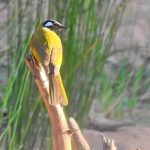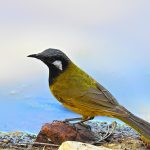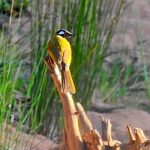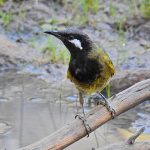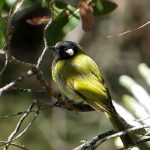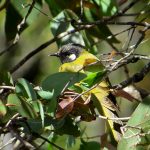WHITE-EARED HONEYEATER
The White-eared Honeyeater is a small bird measuring around 14 to 16 cm in length.
It belongs to the honeyeater family Meliphagidae, which includes a diverse group of nectar-feeding birds found primarily in Australia and nearby regions.
It is primarily olive-green in color with a distinctive white patch behind its eye, giving it the name “White-eared” Honeyeater. The wings and tail are darker, and it has a yellowish patch on its throat and chest.
This species is endemic to south-western Australia, primarily found in the southwestern corner of the continent. Its preferred habitats include woodlands, heathlands, shrublands, and forests, particularly in areas with a dense understory and an abundance of nectar-producing plants.
White-eared Honeyeaters are nectar feeders and play a crucial role in pollinating various native Australian plants. They also consume insects and other small invertebrates as part of their diet.
These honeyeaters are known for their active and agile foraging behavior, often moving rapidly through vegetation in search of nectar and insects. They may form small feeding flocks, especially during periods of abundant food.
White-eared Honeyeaters typically build cup-shaped nests in trees or shrubs, often concealed among foliage. Their breeding season varies depending on the region, but it generally occurs from late winter to early summer. The female lays and incubates the eggs, while both parents are involved in feeding and caring for the chicks.

